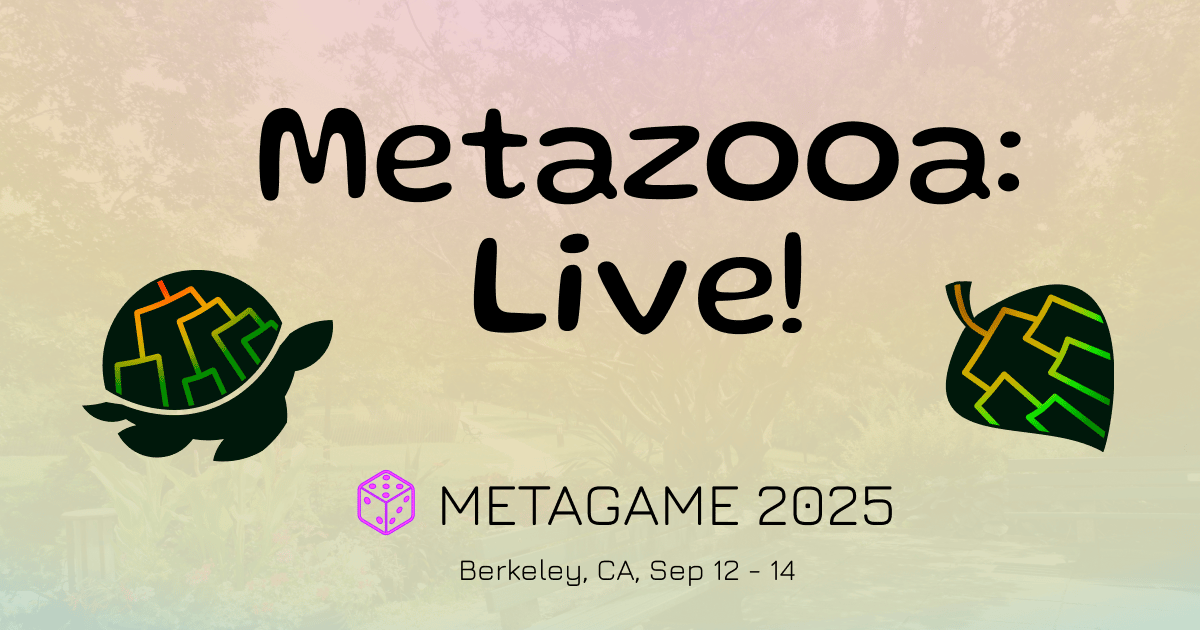- Trainwreck Labs Newsletter
- Posts
- Who put the “honey” in honeysuckle?
Who put the “honey” in honeysuckle?
Answers for Globle, Metazooa, Elemingle and more from July 28 - Aug 3

Coming to your inbox every Monday with a brand new fun-fact and all the answers to Trainwreck Labs games from the past week.
This week, we have…
A fun fact inspired by Metaflora
Metazooa: Live announcement
Answers to last week's games
Reader survey

Metazooa: Live… is coming back!
Saw the hype, but didn’t get a chance to take part in Toronto’s Metazooa: Live? Fear not! After a short break, Metazooa is coming back to life at a brand new location!
This September, the hit feature of Toronto Games Week is going to a new park with new plants, new animals, and new players. Come find the amazing ecological scavenger hunt at Metagame 2025 in Berkely, Califofnia from Sept 12 - 14.
Do you want Metazooa: Live to come to one of your local parks? Let me know!

Who put the “honey” in honeysuckle?

Honeysuckle could be the next diet fad. Fewer calories, but the same sweet taste!
If you’ve ever wandered through a garden on a summer evening and caught a whiff of something impossibly sweet, you might have stumbled across honeysuckle (Metaflora answer #667). But did you know that this fragrant flower is beloved not just for its scent, but for its secret stash of nectar hidden at the base of its floral tubes?
Honeysuckle is famous for its “drinkable” blooms: children (and curious adults) have long plucked honeysuckle flowers, pinched off the ends, and sipped the tiny drop of nectar inside. This isn’t just a fun backyard activity—honeysuckle’s nectar is actually a sophisticated lure. The plant’s tubular flowers evolved specifically to attract certain pollinators. In North America, the ruby-throated hummingbird is a primary pollinator, drawn by the bright colours and sweet liquid. In the Old World, moths and long-tongued bees are the main visitors.
But here’s a twist: not all honeysuckle nectar is created equal. While some species offer up a sugary treat, others, especially the invasive Japanese honeysuckle, have become so widespread in the U.S. that they outcompete native plants—sometimes to the detriment of local ecosystems. Additionally, while the flowers and nectar are safe to enjoy, the berries produced by certain honeysuckle species can be toxic and should not be eaten.
Nevertheless, honeysuckle’s role in folklore and gardens is enduring: in Victorian England, bringing honeysuckle indoors was considered a guarantee of sweet dreams, while in China, honeysuckle tea (jin yin hua) has been used for centuries as a remedy for everything from colds to summer heat.
So next time you catch that honeyed scent, remember: you’re breathing in a story of evolution, tradition, and a little bit of backyard magic.
Trivia
Why does honeysuckle smell stronger at night? |
Answers to last week's games
Monday, July 28 to Sunday, August 3.

Globle
| Globle: Capitals
|
Chronogram
| Fictogram
|
Metazooa
| Metaflora
|
Linxicon
The following are the shortest paths from last week:
#531 island → suitcase → pack → prepare
#532 permanent → removal → remove → reject
#533 military → soldiers → people → yourself → itself
#534 farmer → farmers → peoples → say
#535 somewhere → place → misplace → error
#536 per → ruler → scientist → experiment
#537 size → grow → regenerate → restore
#538 Play now!
Elemingle
#187 Sulfur
#188 Thorium
#189 Zinc
#190 Lead
#191 Bismuth
#192 Bohrium
#193 Uranium
#194 Play now!

That’s all for this week. Thanks for reading!
Before you go…
Need a hint, but can’t wait for next week’s newsletter? Join the Trainwreck Labs Discord server!
How would you rate this week's newsletter? |


